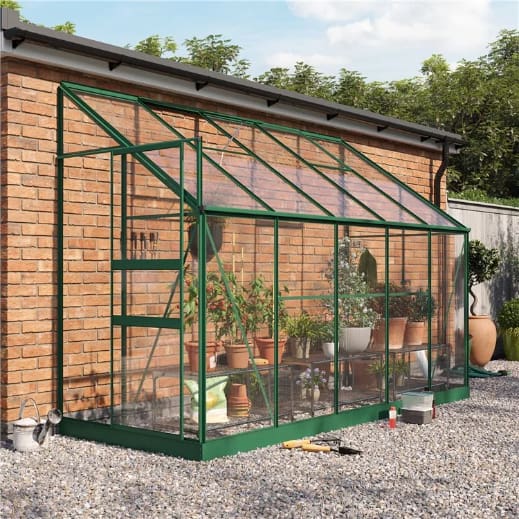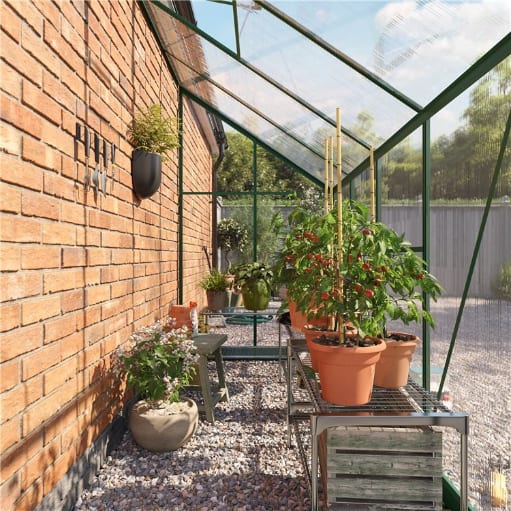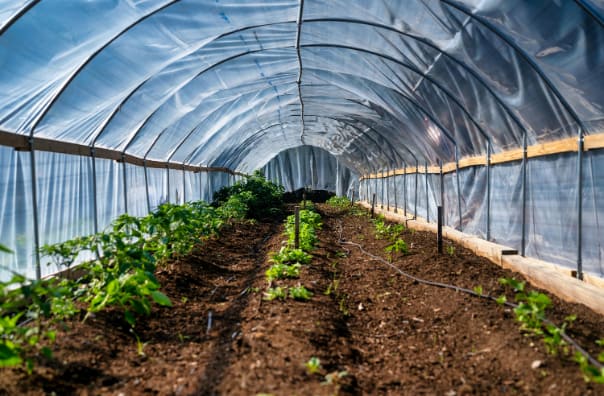Jump to:
When nurturing plants within a garden greenhouse, the right placement influences their growth. Deciding between full sunlight or shade demands careful consideration.
In this blog, we’ll define what “full sun” and “full shade” is, including their benefits. That way, you can determine the most suitable environment for your greenhouse.
What Does “Full Sun” Mean?

Full sun means that plants receive at least six hours per day. This amount of sun exposure is essential for their growth and development. It provides them with the needed energy to carry out photosynthesis. If you place your greenhouse in a “full sun” spot, your plants can benefit from ample sunlight during the day.
Keep in mind, though, that six hours might not suffice for certain plants, such as vegetables. In such cases, they typically need eight to ten hours of sunlight daily to thrive. So, while full sun exposure may appear advantageous, it may not be the best option for most, if not all, plants. This applies to both greenhouse settings and open gardens.
The key takeaway is that full sun is good for some plants but not all. Think about what you’re growing.
Which plants thrive best in a full-sun greenhouse setting?
These plants require ample sunlight for optimal growth for several hours each day:
- Tomatoes
- Peppers
- Cucumbers
- Eggplants
- Basil
- Rosemary
- Thyme
- Oregano
- Marigolds
- Petunias
The Benefits of Full Sun for Greenhouses

Exposing your greenhouse to full sun comes with promising benefits, including:
1. Enhanced photosynthesis
Photosynthesis occurs when plants receive ample sunlight, a.k.a. their main source of energy. Placing a greenhouse in full sun allows them to maximise this exposure. This promotes proper growth and development.
Moreover, they can turn carbon dioxide into oxygen efficiently. This means more oxygen is released into the greenhouse environment.
2. Increased solar heat gain
Full sun exposure results in greater solar heat gain within the greenhouse. Sunlight permeates the transparent walls and roof. It then warms the interior and creates a favourable microclimate for plant growth. This effect is particularly advantageous in cooler climates or during colder seasons. For one, the increased temperature helps create optimal growing conditions, supporting plant thriving.
3. Reduced humidity levels
Sun-drenched greenhouses often experience lower humidity levels compared to shaded environments. The combination of sunlight and warmth helps evaporate excess moisture. This results in less humidity inside the greenhouse structure. Lower humidity also minimises the risk of fungal diseases and moulds. It prevents excessive moisture accumulation on plant foliage.
4. Extended growing season and higher crop yields
The abundant sunlight provides plants with the warmth and energy needed for growth. This allows for earlier planting in the spring. For instance, tomato plants can receive consistent warmth and light. This helps speed up their growth and fruit production. With earlier harvests and prolonged picking periods, you’ll enjoy a higher crop yield.
A full-sun greenhouse allows plants to thrive even during colder months. In winter, the greenhouse traps sunlight’s warmth and creates a warmer microclimate. This protects plants from frost and freezing temperatures. Thus, even in unfavourable outdoor conditions, you can still cultivate and harvest crops.
How “Full-Shade” Works?

Full greenhouse shade occurs when plants receive no direct sunlight throughout the day. This could be due to tall trees or structures blocking the sun entirely. So, plants grown in full shade rely on ambient and indirect sunlight for their energy needs. While some may thrive in these conditions, others may struggle. Again, understanding the requirements of different plant species helps.
To achieve full shade in a greenhouse, it may involve positioning it in a spot shielded from the sun. Using shading materials like shade sail cloth can further block out excess sunlight.
Which plants do well in a full greenhouse shade environment?
These plants are well-suited to low-light conditions. They can thrive in environments where direct sunlight is limited:
- Ferns (such as Boston Ferns)
- Peace Lilies
- Spider Plants
- English Ivy
- Begonias
- Coleus
- Impatiens
- Hostas
- Caladiums
- Pothos
Advantages of Shade for Greenhouses
Here are the top advantages of shaded greenhouses, where plants thrive away from the sun:
1. Heat reduction
Direct sunlight can cause internal temperatures to soar to potentially harmful levels. Enter shaded structures, which prevent excessive heat buildup inside a greenhouse. The intensity of sunlight can be reduced with the help of shade cloths, lattices, or trees. This creates a more favourable environment for certain plants.
2. Sunburn and heat stress protection
Direct sunlight poses risks to plants with sensitive or delicate foliage. They especially benefit from a shaded greenhouse away from intense sunlight. This protection prevents the damaging effects of sunburn and heat stress. As a result, they can grow healthier and reach their full potential.
3. Cultivating shade-tolerant crops
Full-shade greenhouses provide an ideal environment for cultivating shade-tolerant crops. This allows you to diversify your crop selection and expand your range of plants. In addition to the list provided earlier, you may want to consider adding the following crops:
- Lettuce (especially leafy varieties like spinach and arugula)
- Kale
- Swiss Chard
- Radishes
- Spinach
- Bok Choy
- Mustard Greens
- Mizuna
- Tatsoi
- Endive
These greens can provide a fresh supply of healthy veggies for your table. Most importantly, you can enjoy healthy meals while maintaining a thriving garden.
So, which greenhouse positioning suits your needs best? Is it the full sun for enhanced photosynthesis and an extended growing season? Or do you prefer the shaded environment for safeguarding sensitive plants?
Ready to start your new planting journey? See our full guide to choosing the right greenhouse.
If you have any further questions, contact us and don’t hesitate to give us a call at 01909 768840. Up next on your reading list: Garden Shade Ideas For a Shady Backyard Oasis










